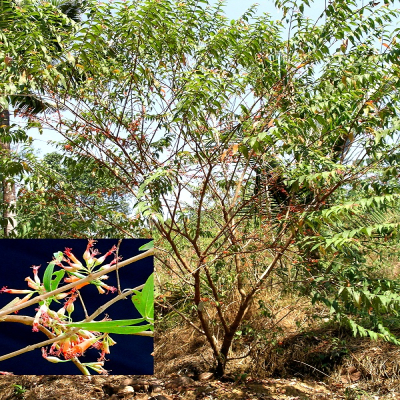Distribution and habitat: Found throughout India
Botany: Much branched beautiful shrub, 1-4 m high, rarely upto 7 m, branches spreading; bark cinnamon-brown.
- Leaves : Lanceolate, oblong lanceolate or ovate- lanceolate, sessile, softly pubescent above, hoary beneath.
- Flowers : Numerous, bright red, in dense, axillary, paniculate cymose clusters. Capsules ellipsoid, membaranous.
- Seeds : Brown, minute, numerous, smooth, ovate or obovoid.
Properties: Antibiotic, abortifacient.
Chemical constituents: Malvidin pentose, glucosides, tannin, ursolic acid, kaempferol -3-glucoside, D-mannitol; pectin, protein, riboflavin, aspartic acid, citric acid, ellagic acid, mallic acid, isoquercetin, punicalagin, punicic acid, Asiatic acid, maslinic acid, octacosonol, Woodfordin D, Oenothein A, betulic acid, pyridine, 1-(2-piperdinyl) -2-propane, methyl isopelleterine, polystachoside, myricetin-3-galactoside.
Uses: Flowers used in skin diseases, burning sensation, bilious fever, hepatopathy, verminosis, erysipelas, haemorrhages. They are also highly valued as a stimulant in pregnancy.
Formulations: They are an important ingredient in Aristams and Asavams as they aid in fermentation.
Agrotechnology
Soil: Rocky as well as clayey soil. It prefers dry areas.
Propagation: rooted cuttings and seeds. Germination in sand was found to be better than in brick powder and soil. The seed stored at normal room temperature showed a decline in viability from initially 96% to 1.25 % in 12 months.
Planting: Spacing of 4m x 4m is adopted.
Flowering starts 2 years after planting.

